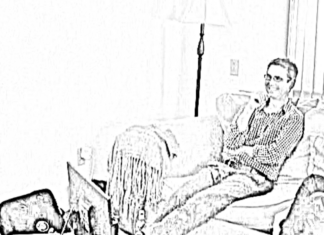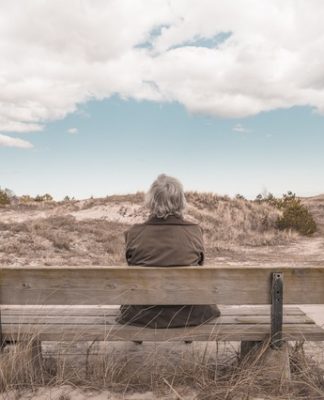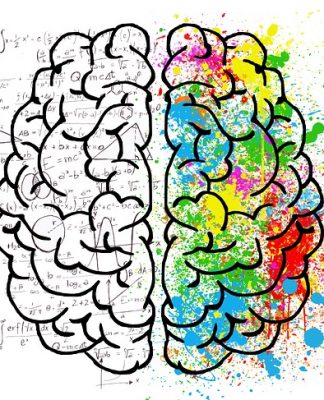On September 16, 2016, Terence Crutcher was reportedly shot by Tulsa, Oklahoma police woman, Betty Shelby (http://www.nbcnews.com/news/us-news/disturbing-helicopter-footage-shows-oklahoma-police-kill-unarmed-man-n650866). The video begins with a shot of Mr. Crutcher’s minivan stalled in the middle of the road. He was unarmed when the helicopter transmittal picked up feed that spoke indications he may be armed. His hands were in the air when it was stated from the same feed that Mr. Crutcher was not cooperating. The 16th may have some odd taboo connection because Gregory Delong of Virginia Beach, Virginia was reportedly shot by a 30-year old man who considered him a rival. That’s ironic because according to him mom, he was actually lured to his death by someone he considered a friend.
I make this odd comparison, not just because of the commonality of the day of the year they died, but also because both men were essentially ambushed. Both in situations where they trusted a situation that went south (got bad) real quick. One reportedly gunned down in public because of how he looked. The other reportedly gunned down in secret, according to his mom, because of how he looked. I need you to see, there’s still a link and commonality for both men, even though Mr. Crutcher was an African-American and Mr. DeLong was Caucasian. Bullets don’t know color, gender, age, religion, or socioeconomic status. However, whether conscious or subconscious, we can presume the shooter and person who determines the bullet’s purpose may have hidden agenda.
It’s going to happen whether we surmise this or not. Mr. Crutcher’s name will be added to a list of men in America who have, because of their ethnicity, been victimized by their local police. Organizations like Black Lives Matter and the NAACP will be stoking the news to keep the fire of this story alive for weeks. Admittedly, if you look at the news feed that’s out, he was shot for no reason other than his car was seemingly parked in the middle of the road and/or he was a rather large, Black gentleman. It is the same uproar that Black folks raise when there’s a missing African-American girl/woman and there’s no press coverage. Yet, the young lady that’s Caucasian often receives media “tsk-tsks” and concerned wishes she will be found and is doing well. For some of the latter, it’s years later and we’re still wondering where this young lady may be.
Even with the aforementioned example, there’s still a commonality. Mr. Crutcher’s family is in deep grief and outraged, much in the same way Mr. DeLong’s mom was in my office. Yes, she knows I was going to write this blog. She actually encouraged me to do it. His mother was outraged because the reported background story is that her son was lured to his death because of a “game” that’s played in the Carriage House Apartments neighborhood in Virginia Beach. She believes her son was targeted specifically because he was White. By her account, that’s what someone told her was one of the purposeful rules of this deadly interaction.
Take note the reverse of “the missing girl” scenario has been reversed. Mr. Crutcher will get lots of media coverage because of the negative context of his death, while Mr. DeLong will not. This is what outrages his mother. She wanted desperately to know why “all” lives don’t matter. It’s ironic that her son’s death getting ignored has the same outraged perspective of the lack of coverage African-American females and the “missing girl scenario”. It’s not ironic both carry such a deep and hurtful bias.
As always, I went around the house to get to the front door. “Bias” is the purpose of this blog article. More specifically, something called a Hostile Attribution Bias. It’s a term I first became familiar with when I was working on my dissertation. Specifically, a hostile attribution bias is the tendency to interpret another person’s behaviors as having hostile intent. This will occur even when that person’s behavior is clearly ambiguous or benign. There are factors that are calculated based on the subjectively biased perceptions of the person taking in information about a person or their environment. Needless to say these factors have negative attributions.
I have a story I tell my clients about how “isms” are passed from generation to generation. As usual, hold on because this will make sense. If you put five monkeys in a cage and in that cage you put a bunch of bananas at the top, it is logical that at one point some monkey is going to get hungry and reach for one. At that point you spray all the monkeys with a fire hose. That’s not only irritating but painful if you get too close. Take some time to instill this fear because at some point another monkey is going to forget, get hungry, and reach for the sky. Each time this happens, you spray the whole group down until defeated and hungry, they stop reaching.
Now, at this point you take one of the old monkeys out and put a new one in the cage. Mind you, monkeys don’t really have a good communication system. So, when the new monkey reaches for the untouched food, not only do you spray him but some of the other confused and irritated monkeys will jump in to sanction this poor soul for something he doesn’t quite understand. That means they beat the crap out of him and he can only assume it has something to do with the bananas at the top of the cage.
After establishing this, you put the hose down and systematically remove the old monkeys, replacing them with newer ones. The same system of unspoken fear, anger, and irritation will occur. However, the newer generations have NO idea why this it’s bad to reach for food. It doesn’t make sense to them. They just know that it’s “wrong” to do this because of an unspoken fear that’s been passed down from each ‘generation’. That ladies and gentlemen, is a simplified hypothesis of how racism, sexism, ageism, biases, judgments, and other stereotypes are passed within families and cultures. Each subsequent generation needs very little communication as to why people should be hated. We naturally trust the micro-system of our family system, often without question. It’s not until there’s a cognitively dissonant interaction or experience outside the family in other micro-systems or we’re challenged by the divergent cultures of society’s macro-systems, that we begin to question what’s been our norm.
Personally, I try to recognize danger by logic, not by bias. As a female, if I’m going to the ATM at night. I’m looking at everybody! I don’t care about gender, color, or environment. In his book, “The Gift of Fear: And Other Survival Signals That Protect Us from Violence”, Gavin de Becker calls this the “gift of fear”. I think because I used to be a jail officer, this is more of a learned gift that’s become a clinically significant talent. I was once out with a male friend and we were pulling up to an ATM. Remember, I’m African-American. I did not relax when I drove up and there were four or five young, Black men working on an engine in the parking lot. This was not a case of ethnic bias. It was dusk. There were bushes blocking my view of the street and I could barely see exactly how many people were actually in the group around the truck. That’s how dusk it was.
In my mind, I quickly came to the conclusion that if I can’t see the engine or how many people there are because there’s not enough day light left, something’s wrong. If I can’t see the engine, how can they be so focused? If something happens, no one from the street would know anything was occurring. I sat staring as my friend pulled out his wallet to find his ATM card. Everyone around that truck stood peering intently under the hood and in the few minutes it took my passenger to get his card out of his wallet, it had gotten darker. I never turned off the car and when my friend started to open his door, I told him not to open it as I put the car in reverse to leave. I explained why as I drove away that something was not right with the situation. It was better-safe-than-sorry to simply go to another ATM that had better visibility and lighting.
Was I right about what I saw? I don’t know. It wasn’t a hypothesis I wanted to test. Please know I would have done this if it was a group of White, Brown, Black, Green, Yellow, or Purple people out that evening. They’re correct in police shows: after being trained you can’t turn that kind of discernment off. Perhaps because I don’t operate on the principles of ‘isms’ I didn’t act in a harsher manner. 20/20 hindsight, I probably should’ve called the police if I was that wary but I didn’t. I think it was more important at that time to leave as soon as possible.
In short, bias and fear don’t mix well. While there are in-congruent factors for everyone’s perceptions, the foundation of learned fear and bias remain the same. In the same way I was previously trained to read situational cues, some people have been trained to hold negative perceptions against others. This is part of why men like Mr. Crutcher and Mr. DeLong are victims. Does color really matter when your loved one has been murdered? Like bullets, life force itself has no color. I’d like to think that all lives matter because we’re all human beings but I know that’s wishful thinking.
This is not only the roots of racism related to the history of American slavery and the German Holocaust. This kind of ideology most likely started with the division of Abraham’s sons Ishmael and Isaac. Does everybody think that the Syrian war is just about government? I’m sure it’s more than just me who has considered it has religious roots as well. Who can combat such a deeply rooted prejudices?! Ismael and Isaac are from times before Christ. Even when we think ‘isms’ are extinguished, that just means it’s moved from being overt actions and judgment, to covert actions and judgments.
My purpose in writing is to simply note that ALL lives matter. Death is death. Heartache has no color either. We should mourn the senseless loss of life and the possibilities that it will never manifest. We should mourn both the inane, illogical reason for these two men losing their lives AND their lost potential. What if some murdered or missing person held the cure for cancer? What if some life lost due to racial or religious bias was the leader of a unity we only dream of because we’re too biased and divided to collectively think as a unified circle of one?


 Chevette Alston, Psy.D., has earned two bachelor degrees from North Carolina State University (Multidisciplinary Studies & Sociology), one masters degree in Counseling from UNC-Chapel Hill, and a Clinical Psychology doctorate from Capella University. She is currently pursuing a masters in divinity at Regent University. Dr. Alston has almost 20 years of experience in mental health counseling and treatment. She has also been an adjunct instructor for schools such as Johnson & Wales, Tidewater Community College, Regent University, and currently South University.
Dr. Alston is licensed as an LPC in North Carolina and Virginia. She is also trained and Board eligible as a clinical psychologist in the Commonwealth of Virginia. Her clinical skills include EMDR, hypnotherapy, and trauma training. She is currently the director for the Center for Attention Deficits at Christian Psychotherapy in Virginia Beach. Other duties include psychological assessments for children, adolescents, and adults. Dr. Alston’s target populations are women's issues, marital counseling, AD/HD, depression, trauma, anxiety, stress, grief, and parenting skills. She sees a variety of clients in all age ranges and cultures. In addition to clinical supervision, Dr. Alston is also an occasional co-host for local radio shows and is available for public speaking.
Esiri Ministries is her grassroots mental health initiative. The women’s empowerment organization was incorporated in April of 2013 and is a 501(c)(3) charity organization. ESIRI is a non-profit venture that is dedicated to the mental health and well-being of all, but the specific population targeted is women of all ages. In addition to psychological treatment, a variety of classes, networking, and conferences for self-improvement and education are offered as well. Contact esiri-va.org or esiri@outlook.com for questions or for more information.
Chevette Alston, Psy.D., has earned two bachelor degrees from North Carolina State University (Multidisciplinary Studies & Sociology), one masters degree in Counseling from UNC-Chapel Hill, and a Clinical Psychology doctorate from Capella University. She is currently pursuing a masters in divinity at Regent University. Dr. Alston has almost 20 years of experience in mental health counseling and treatment. She has also been an adjunct instructor for schools such as Johnson & Wales, Tidewater Community College, Regent University, and currently South University.
Dr. Alston is licensed as an LPC in North Carolina and Virginia. She is also trained and Board eligible as a clinical psychologist in the Commonwealth of Virginia. Her clinical skills include EMDR, hypnotherapy, and trauma training. She is currently the director for the Center for Attention Deficits at Christian Psychotherapy in Virginia Beach. Other duties include psychological assessments for children, adolescents, and adults. Dr. Alston’s target populations are women's issues, marital counseling, AD/HD, depression, trauma, anxiety, stress, grief, and parenting skills. She sees a variety of clients in all age ranges and cultures. In addition to clinical supervision, Dr. Alston is also an occasional co-host for local radio shows and is available for public speaking.
Esiri Ministries is her grassroots mental health initiative. The women’s empowerment organization was incorporated in April of 2013 and is a 501(c)(3) charity organization. ESIRI is a non-profit venture that is dedicated to the mental health and well-being of all, but the specific population targeted is women of all ages. In addition to psychological treatment, a variety of classes, networking, and conferences for self-improvement and education are offered as well. Contact esiri-va.org or esiri@outlook.com for questions or for more information.



















